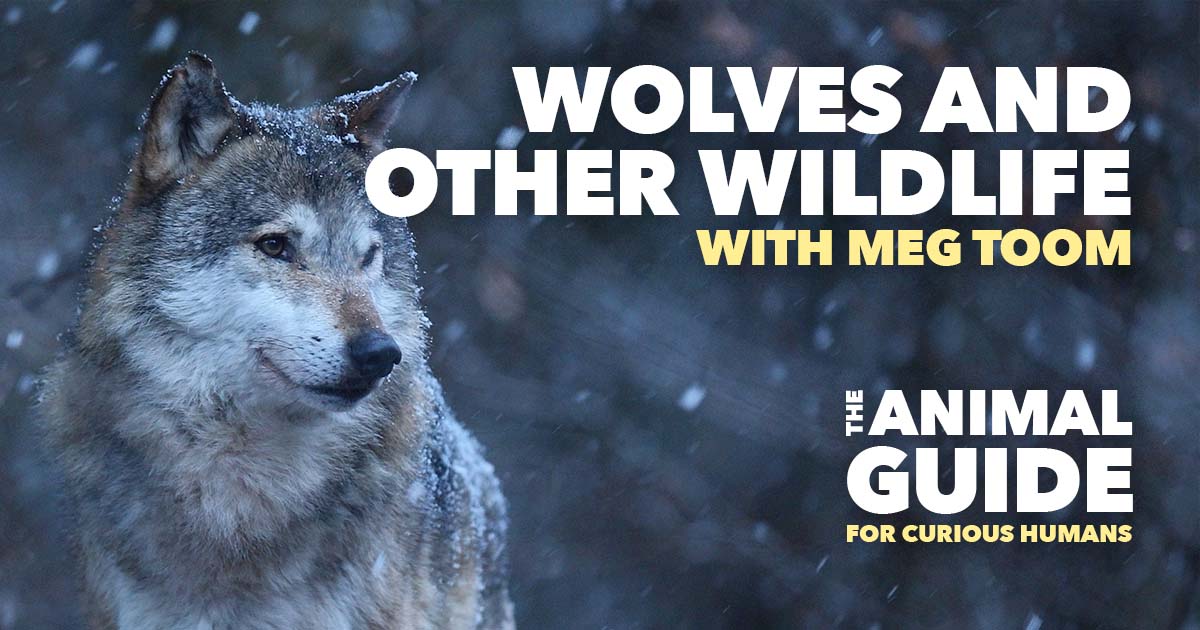In episode 007 of The Animal Guide, we continue our conversation with Meg Toom. Be sure to listen to episode 006, Encounters With Wildlife, to hear host Maureen Armstrong and Meg discuss managing wildlife and human conflict, and in particular the human impact on bear habitats. They also discussed cougars and coyotes.
Meg is principal of Serratus Wildlife Services in British Columbia, Canada, and specializes in human-wildlife conflict mitigation.
Wolf culling in British Columbia
In this episode, Meg and Maureen talk about wolves, and a little bit about foxes and bobcats. Wolves have been a controversial topic of conversation in British Columbia, Canada, in the last few years. The province has instituted a wolf culling program in recent years, ostensibly to protect the caribou population from predation. It hires contractors to shoot and kill wolves from aircraft. This has led to large numbers of kills and, at times, entire packs being wiped out. The culling is the subject of legal action at this point in time (January, 2022) and we will be following its progress in the coming months and years.
Takaya, the lone wolf
British Columbia allows recreational hunting of wolves. This episode includes the story of Takaya, a lone wolf who lived near Vancouver Island and was shot and killed by a recreational hunter in 2020. You can find out more about Takaya and his bond with wildlife photographer Cheryl Alexander in this The Nature of Things documentary called Takaya, Lone Wolf.
Meg shares thoughts on how to address urban-wildlife conflict prevention that are applicable no matter which part of the world you live in.
Wolves are wary of humans
Meg points out that while wolves are naturally wary of humans, they will enter an unsecured property if there are animals including pets and farm livestock. Indeed, wolves have been known to stalk dog walkers. Important safety measures include fencing off one’s property securely; being extra careful and vigilant when taking pets out if you live in or visit a location with a wolf population; and not leaving pet food out. Of course, deliberately feeding wolves should not be done.
If a wolf is encountered,, the practices recommended by Meg for encounters with bears will work: making lots of noise, and, if necessary, using bear spray..
As in the last episode, Meg encourages listeners to be prepared by educating themselves about wildlife by finding out what’s being done by various levels of government where you live (or visit) and if possible, volunteering with a reputable animal protection organization.
Finally, Meg provides some generic suggestions for avoiding conflict with wildlife that can be applied to any species anywhere in the world. This forms the basis of Maureen’s blog on the subject which you can find on the webiste TheAnimalGuide.com.
Episode Links and resources:
- Meg Toom on LinkedIn
- Takaya, Lone Wolf, by Cheryl Alexander
- Return of the Wolf. Conflict & Coexistence and The Cougar. Beautiful, Wild and Dangerous, by Paula Wild
- Blog: Living with Wildlife


0 Comments